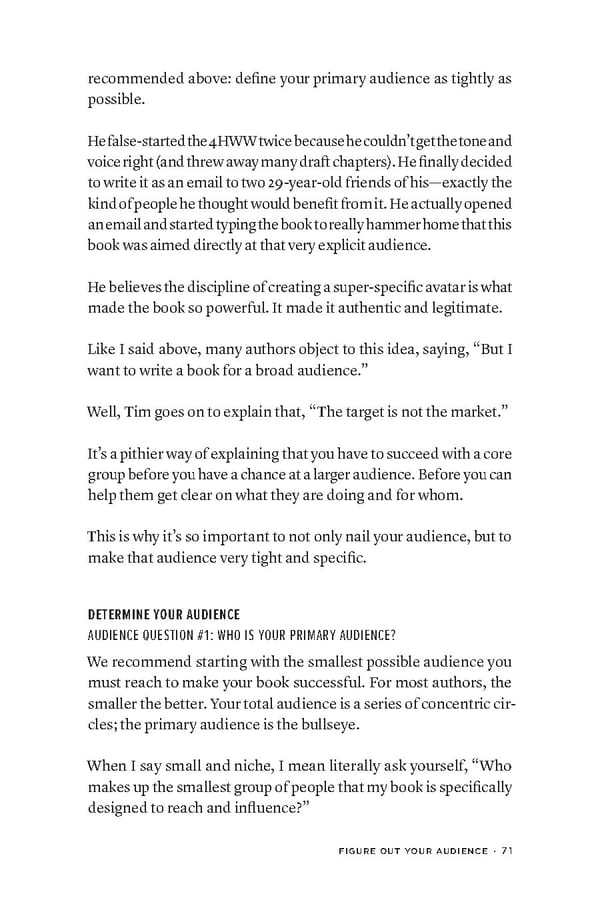recommended above: define your primary audience as tightly as possible. He false-started the 4HWW twice because he couldn’t get the tone and voice right (and threw away many draft chapters). He finally decided to write it as an email to two 29-year-old friends of his—exactly the kind of people he thought would benefit from it. He actually opened an email and started typing the book to really hammer home that this book was aimed directly at that very explicit audience. He believes the discipline of creating a super-specific avatar is what made the book so powerful. It made it authentic and legitimate. Like I said above, many authors object to this idea, saying, “But I want to write a book for a broad audience.” Well, Tim goes on to explain that, “The target is not the market.” It’s a pithier way of explaining that you have to succeed with a core group before you have a chance at a larger audience. Before you can help them get clear on what they are doing and for whom. This is why it’s so important to not only nail your audience, but to make that audience very tight and specific. DETERMINE YOUR AUDIENCE AUDIENCE QUESTION #1: WHO IS YOUR PRIMARY AUDIENCE? We recommend starting with the smallest possible audience you must reach to make your book successful. For most authors, the smaller the better. Your total audience is a series of concentric cir- cles; the primary audience is the bullseye. When I say small and niche, I mean literally ask yourself, “Who makes up the smallest group of people that my book is specifically designed to reach and influence?” figUrE OUT yOUr AUDiENCE · 71
 The Scribe Method by Tucker Max Page 70 Page 72
The Scribe Method by Tucker Max Page 70 Page 72